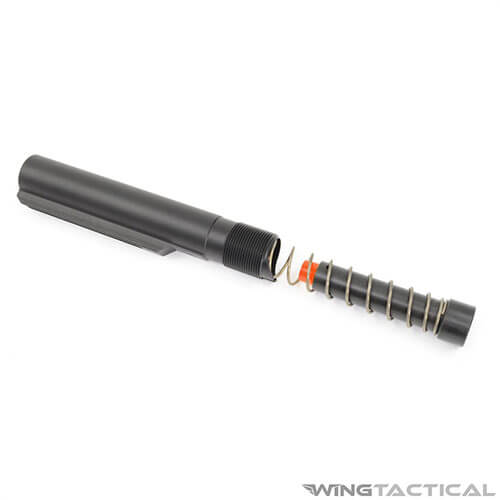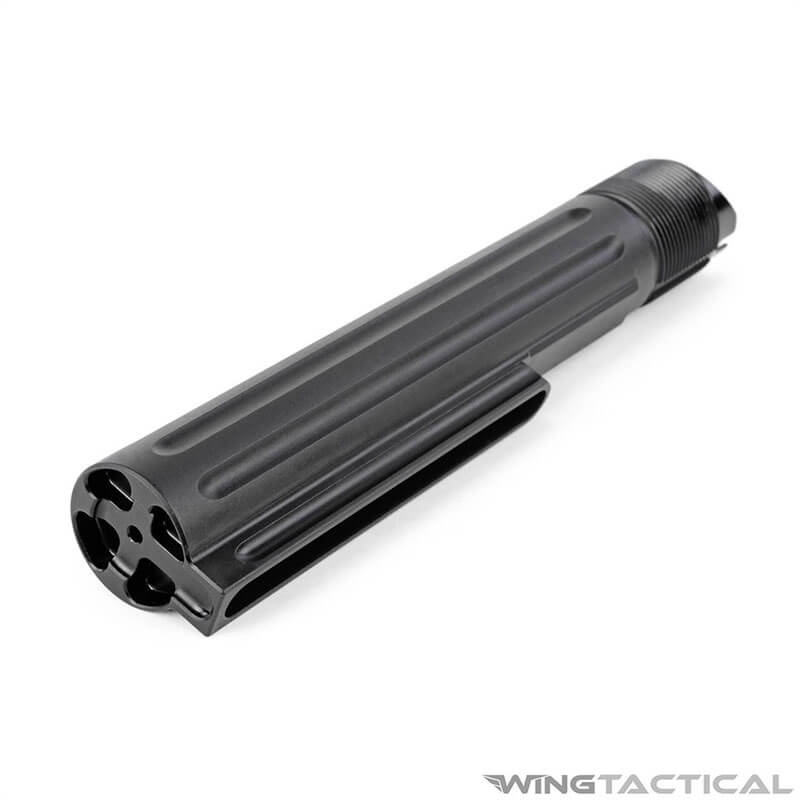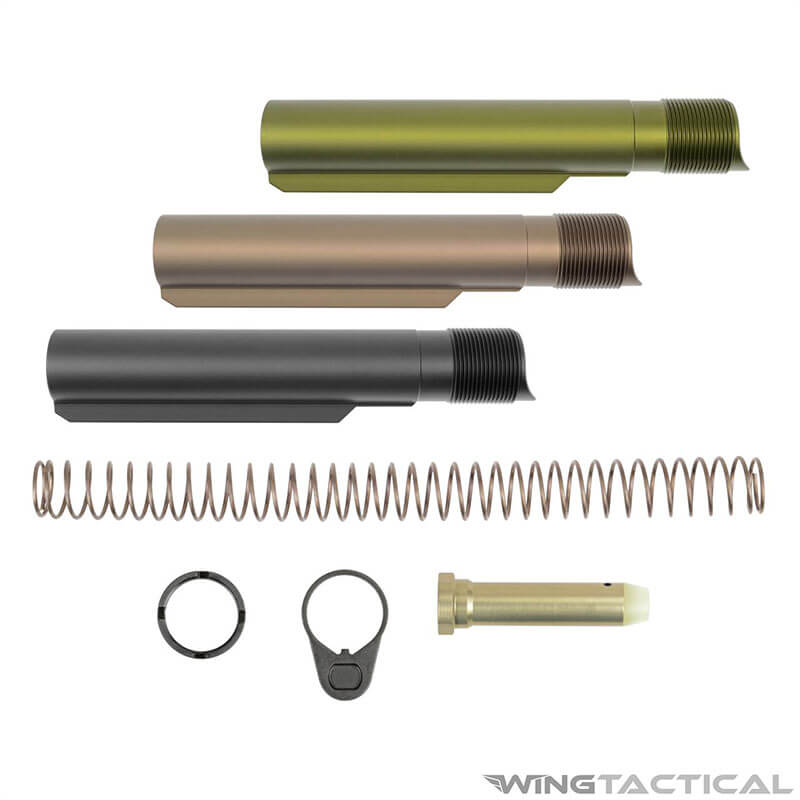The AR-15 buffer tube assembly functions as a vital part of how your gun handles the energy generated when you fire. While it's not technically part of the firearm's gas system, it works with that system to create the right balance and limit your recoil.
Browse our collection of top-quality buffers and buffer tubes to see what we have available, or read on to find out more about these important parts of your AR-15.

Buffer Tubes: A Must-Have AR-Platform Component
When you pull the charging handle of your AR-15, it pulls back the bolt carrier group and pushes against the buffer, compressing the buffer spring. Releasing the charging handle allows the buffer spring to propel it forward, where it grabs a round from the top of the magazine and pushes it into the chamber for you to fire.
After the round is fired, gas from the burned powder enters the gas system through the gas port and travels through the gas tube into the bolt carrier group. The force of the gas causes the carrier to make contact with the buffer, and the buffer spring begins to absorb the energy as it compresses backward in the buffer tube. At a full stroke, the spring once again transfers that energy to propel the carrier forward.
Over time, these moving parts will begin to wear out. You'll want to check your AR-15’s buffer tube regularly and evaluate the performance of your spring to know when they need to be replaced.

Individual Buffer Tubes
While gunsmiths who want to save time sourcing parts might opt for a complete buffer assembly product, some builders opt to purchase their buffer components individually.
Wing Tactical’s collection includes multiple individual buffer tube products for builders looking for peak customization.

Buffer Tube Kits
Builders looking for a streamlined buffer assembly option should consider complete buffer kits — all-in-one packages that contain everything builders need to complete their buffers.
As you source buffer tubes for your AR-15, remember to pay close attention to compatibility.
Wing Tactical: Your Number One Source for AR-Platform Rifle Parts
Whether you're building a new AR-15 from scratch or optimizing an existing firearm, you can find all of the buffer assembly parts you need with Wing Tactical. We maintain a large inventory of buffer tubes, buffers, buffer springs, and full kits that have everything you need to build an all-new buffer system for your gun.
At Wing Tactical, we stand by our products and manufacturers. All of the products you find in our shop come backed by our personal stamp of approval. Other reasons customers love shopping online with Wing Tactical include fast shipping, hassle-free returns, and LEO/military discounts.
Get started today by adding the buffer tubes and parts you need to your cart, or get in touch with our team to find out more and discuss compatibility.
Frequently Asked Questions
Which buffer weight should you choose?
Experienced shooters can fine-tune their buffer assemblies and choose specific buffer weights that help them reduce felt recoil and keep their muzzles flatter during repeat fire. You should choose the buffer weight that’s most compatible with your gas system length, stock size/style, and caliber.
If you’re not sure which weight is right for you, contact our gunsmithing team — we can point you in the right direction.
How can you ensure that you get quality buffer and buffer tube parts?
The AR-15 is a fan favorite because it's easy to modify, but this has led to there being very little regulation for aftermarket parts manufacturing. AR-15 parts are made by countless manufacturers and different companies around the world, creating a competitive market where quality can vary significantly between products.
As an integral part of your AR-15's performance, your buffer and buffer tube quality is crucial. The best way to ensure the parts you order will offer optimal performance is to do your research, pick a reputable manufacturer, and only order from a company you trust. At Wing Tactical, our team carefully vets manufacturers for you, only bringing you the best-quality products for your AR-15.
Should you build your own buffer or buy a complete buffer system?
If you’re an experienced gunsmith looking for a highly custom buffer configuration, sourcing individual parts might make the most sense for your build goals. However, first-time builders might be more comfortable with a complete buffer assembly kit complete with a buffer tube, spring, buffer, and hardware.
How long do AR buffers last?
AR-15 buffer tubes are generally durable, but individual buffer components are subject to wear and tear. Perhaps the most likely buffer component to fail or degrade is the spring, which will lose tension over time. If your rifle isn’t cycling quickly enough, check both your gas system and your buffer spring—either or both might be to blame for slow cycling.
What’s inside the buffer tube assembly?
The buffer tube assembly for an AR-15 is made of five essential parts:
- Buffer tube – This tube houses the buffer and buffer spring, extending off the rear lower receiver of your gun. It also provides a place to mount your buttstock.
- Buffer – The buffer itself looks like a fat nail with a plastic head. It absorbs the force from the carrier after you fire a shot and behaves like a dead-blow hammer against the carrier to push it forward again afterward.
- Buffer spring – The buffer spring absorbs the energy the buffer receives from the carrier, then expands again and returns it to send the carrier forward.
- Receiver endplate – Your receiver endplate keeps your buffer retainer pin and spring in place. Some are also available with an attachment point for a quick detach sling swivel for added functionality.
- Castle nut – This nut locks the buffer tube into the receiver. It should be torqued to spec and staked in place to ensure a firm fit.






